Clove Pink Herb Plants – Learn About Clove Pink Uses In The Garden
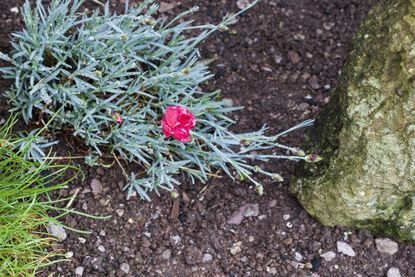

Clove pink flowers (Dianthus caryophyllus) may arrive in an array of colors, but the term "pinks" actually refers to the Old English, pynken, which is something like pinking shears. It is referencing the notched edges of the leaves on the plant rather than the color. Clove pink herb plants are related to carnations and the recognizable scent of clove is borne on the blooms. These lovely little plants are charming additions to the garden.
What is a Clove Pink Plant?
Gardeners with tiny spaces to fill and sunny locations would do well to try growing clove pink flowers. Not only do the plants have a dense tufted form, but the attractive, heavily scented flowers have a long herbal history – both in medicine and as edible garnish and flavoring. Clove pink herb plants are also tolerant of a wide range of soil situations and marine regions, as well as mildly polluted zones. Hardy and pretty, pinks are a useful solution in many garden dilemmas. Clove pink flowers look like miniature versions of the classic carnation, in the family Dianthus. The lightly frilled edges and soft pastel tones complement a range of other perennial bloomers. Pinks are adaptable to USDA zones 5 to 8 and have a tidy 6 to 9 inch (15-23 cm.) spread with flowers that can rise 20 inches (51 cm.) above the basal mound of foliage. The whole affair looks much like a pincushion, both before and after bloom time. The plant before blooming has an airy texture and orderly arrangement, but once it blooms, it achieves a dense aspect decorated with tiny, scented flowers. Flower colors may be white, red, rose, lavender, yellow, and, of course, pink.
Growing Clove Pink Herb Plants
Plants are easy to establish through division or seed, which should be sown indoors six to eight weeks before the date of the last frost in your area. Dianthus caryophyllus is almost indestructible. It can tolerate drought periods once established, soggy spring weather, and light frosts. These plants are perfect for borders, containers, and even among pavers. The best situations are full sun locations in well-drained soil, but even fertility isn't an issue with these herbs. Pinks can survive in fairly inhospitable soil just fine and will reliably come up year after year. Occasionally, division is necessary, as the center dies out and flower production diminishes. Deadheading can be time-consuming with the tiny flowers, but the process also encourages the plant to continue flowering throughout the growing season.
Clove Pink Uses
Pinks have a long chronicle of uses, both as a decorative plant and as a medicine and culinary herb. In culinary applications, the flower was used candied, as a flavoring in syrups, and even in a liqueur. The key to using the flowers is to remove the white heel, which has a bitter flavor. Once done, the petals add beauty and flavor to salads. Traditional clove pink uses as aromatics are part of the history books. Add the flowers to potpourri, dried as a laundry sachet, or in many cosmetics as a spicy perfume. Medicinally, clove pinks may relieve tension, heartburn, and flatulence. There are even some reports that the plant is good for heart patients and epileptics, but these statements can't be verified without a doctor's reference.
Gardening tips, videos, info and more delivered right to your inbox!
Sign up for the Gardening Know How newsletter today and receive a free download of our most popular eBook "How to Grow Delicious Tomatoes."

Bonnie Grant is a professional landscaper with a Certification in Urban Gardening. She has been gardening and writing for 15 years. A former professional chef, she has a passion for edible landscaping.
-
 Want a Backyard Mini Orchard? Create Your Own Container Orchard
Want a Backyard Mini Orchard? Create Your Own Container OrchardEasier to care for in small spaces, a backyard mini-orchard makes sense for busy gardeners and juicy fruit is the reward.
By Teo Spengler
-
 Urban Beekeeping Guide: Top Tips For Raising Bees In The City
Urban Beekeeping Guide: Top Tips For Raising Bees In The CityUrban beekeeping can be a rewarding and appreciated pastime, but first be sure it’s legal in your city and learn the ropes of beekeeping.
By Mary Ellen Ellis
-
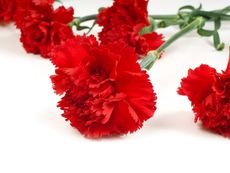 Reasons To Celebrate National Carnation Day
Reasons To Celebrate National Carnation DayLearn the fascinating American history of the red carnation, as Ohio celebrates National Red Carnation Day on January 29.
By Mary Ellen Ellis
-
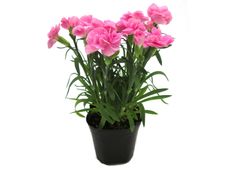 Carnations In Containers – Learn About Potted Carnation Plants
Carnations In Containers – Learn About Potted Carnation PlantsCarnations are extremely popular and make stunning cut flower arrangements. They are also an excellent choice for growth in containers. Carnations in containers can bring much needed color to small landscape plantings, as well as window boxes. Learn more here.
By Tonya Barnett
-
Septoria On Carnations – Learn About Carnation Leaf Spot Control
Carnation septoria leaf spot is a common, yet highly destructive, disease that spreads rapidly from plant to plant. However, septoria leaf spot of carnations is relatively easy to manage if caught early. To learn more about this disease, click the following article.
By Mary H. Dyer
-
Carnation Rhizoctonia Stem Rot – How To Manage Stem Rot On Carnations
There are few things as delightful as carnations. They are relatively easy plants to grow but can develop fungal problems. Carnations with rhizoctonia stem rot, for instance, are a common problem. Click here to learn the symptoms and treatment for this common disease.
By Bonnie L. Grant
-
Carnation Fusarium Wilt Info: How To Control Fusarium Wilt Of Carnations
Carnations have a rich and meaningful history, and are some of the oldest cultivated flowers. Despite this, they are susceptible to a number of issues, like fusarium wilt disease. The following contains info on treating carnation fusarium wilt.
By Amy Grant
-
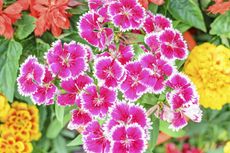 Companion Plants For Dianthus – Tips On What To Plant With Dianthus
Companion Plants For Dianthus – Tips On What To Plant With DianthusDianthus are low-maintenance plants prized for their ruffly blooms and sweet-spicy scent. If you're wondering what to plant with dianthus in your garden, click this article to get some helpful tips and suggestions.
By Mary H. Dyer
-
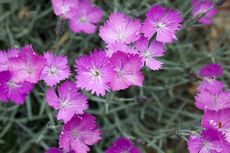 What Is Firewitch – How To Care For Firewitch Dianthus Plants
What Is Firewitch – How To Care For Firewitch Dianthus PlantsOftentimes, I am asked by customers for specific plants only by description. For example, "I'm looking for a plant I saw that's grass-like but has little pink flowers". I find it is Firewitch dianthus that has caught their eye. Learn more about it here.
By Darcy Larum
-
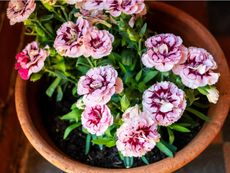 Carnation Garden Plants: Tips For Growing Carnations
Carnation Garden Plants: Tips For Growing CarnationsCarnations remain the most popular cut flower, and many people want to know how to grow carnation flowers. Anyone can learn about growing carnations and enjoy the rewards by reading this article.
By Gardening Know How